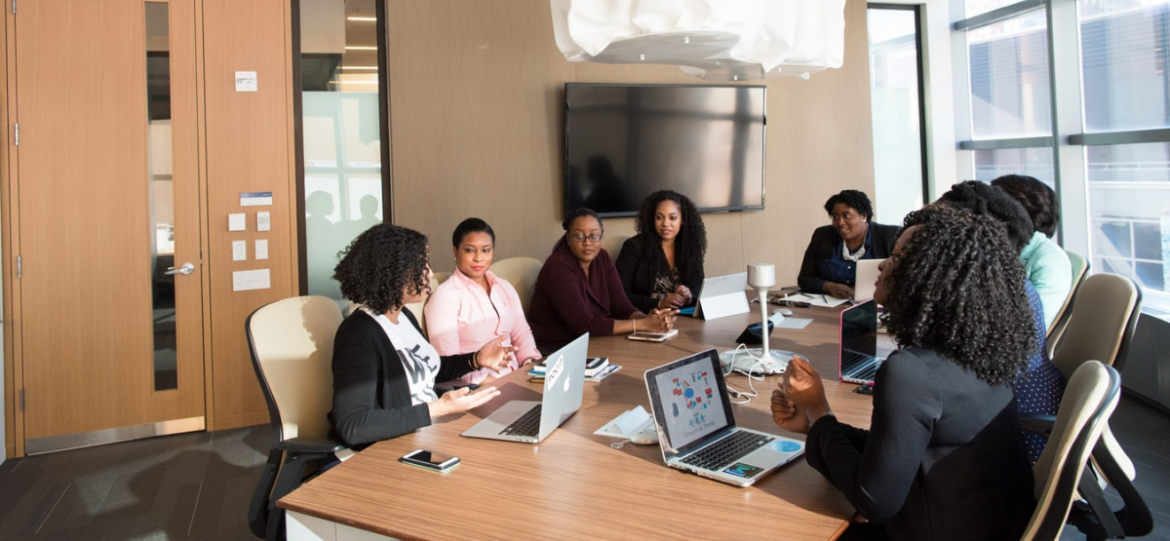Being polite in a business environment is more than saying please and thank-you. There are a lot phrases or words we add to our speaking and writing for politeness. If you are perceived as being impolite, other staff, people from other firms and clients will avoid you and business and opportunity will pass you by. Politeness is a soft skill that can be learned and it is essential for learning and perfecting your Business English!
This article will address all the important points regarding greetings and politeness formulas, so let’s dive right in!
How are greetings and politeness expressed in English?
Entering the business world can be a stressful time in any context, but when we’re doing it in our second language, it’s even more complicated. As you probably already know, English is the first language in business and success in an industry can depend on your ability not only to communicate, but to speak in a nuanced and polite way.
Wherever your English level is right now, you can easily elevate your presentation by studying greetings in English and politeness formula. What do we mean by that, you might ask?
Greetings in English can be varied depending on the context we’re in. Any of the following situations could call for a different type of greeting:
- Entering the office and seeing your colleagues
- Meeting a friend of a friend for a business lunch
- Attending a conference
- Turning up to a job interview
- Answering the phone in your office
- Writing a letter of complaint
- Sending a quick email to a colleague
Greetings and politeness is not an easy thing to do.
You might think that “hello” is all you need to know, but it’s more complicated than that! When we’re considering politeness formula in English, we have to take into account the formality of the exchange, whether or not you know the person you’re speaking to, and your method of communication.
This might sound familiar to your own language, but one important thing to note about politeness formula is that it is ill-advised to translate directly from one language to another. If you’re used to greeting a client with Monsieur in French, for example, the same logic doesn’t apply in English: we can’t simply say Mr as a formal greeting in English.
Let’s take a closer look at some examples.

All about politeness formula in English
Studying politeness formula in English can be a little more arduous than in certain other languages, simply because English-speaking cultures (especially the British) value displays of politeness. The way you express politeness can change subtly from written to spoken communication, or from informal to formal settings.
We’re going to take a look at some example politeness formulas depending on the context.
Oral greetings in English
Spoken greetings in English are probably the easiest to master, as you’ll already know a good selection of options without realizing it.
Let’s begin by taking a look at some oral greetings in English for informal settings. This could be speaking to a friend, meeting up with a family member, or saying hello to a close colleague, for example. In any of those situations, depending on your relationship with the person in question, it could be perfectly acceptable to use one of the following greetings in English:
- “Hi!
- “Hey!”
- “Morning!”
- “How are things?” or “How’s things?”
- “What’s new?” or “What’s up?”
- “Good to see you.”
Let’s turn our attention to more formal greetings in English in oral communication. A more formal situation, or indeed a non-informal situation, might include greeting work colleagues at the office, congratulating your team, attending a professional development seminar, or attending a job interview. In these types of situations, you might opt for one of the following formal greetings in English:
- “Hello!”
- “Good morning”, “Good afternoon,” “Good evening”
- “It’s nice to meet you.”
- “It’s a pleasure to meet you.”
Written greetings in English
Things get a little more difficult when we consider politeness formula and greetings in English in the context of written communication. Not only is there the question of spelling, but written communications must respect certain standards and they also require some knowledge of layout.
In the business world, you’ll be faced with informal written greetings in English on a regular basis. Simply sending an email to your colleague will require a greeting. The follow expressions work well in informal settings:
- “Hello there, …”
- “Hi, …”
- “Morning, …”
- “Hey guys, …”
You may have noticed already that each of the following informal written greetings in English are followed by a comma. Normally, at the beginning of any written communication you would begin with a greeting, a comma, and a paragraph, before beginning the main body of your message.
The above expressions all work well in their own right but adding the recipient’s first name (or title and surname) is more respectful, if you know it.
Formal greetings in English in written communication
Now let’s take a look at formal greetings in English in written communication. You might need one of the following examples of politeness formula when sending a job application, communicating with your boss, or writing to a client, even if he might be dissatisfied:
- “To Whom It May Concern, …” (when you are writing to an institution or company rather than a named individual)
- “Dear Sir/Madam, …” (when you are writing to an individual whose name you do not know)
- “Dear Mr/Mrs/Ms Parker, …” (when you are writing to a specific individual)
- “Dear Professor Parker, …” (when you are writing to a specific university professor)
A few notes on the use of titles in English politeness formula. As you’ll see above, when writing to a named individual, you have a choice between “Mr” for men, and “Mrs” or “Ms” for women. The latter form is the more modern choice, whereas the more traditional “Mrs” is used for married women. If you’re unsure, always opt for “Ms”, and certainly never use the archaic “Miss” when speaking to any adult woman. If you’re unsure of the person’s gender, it is safer to simply use the person’s first and/or surname to avoid confusion.
Greetings in English on the phone
Depending on your role, you might find that you often have to answer the phone or speak to colleagues and clients on the phone throughout your day. If that’s the case, it’s a good idea to pin down some essential greetings in English.
First things first: if you’re answering the phone in any of the formal or informal contexts we’ve outlined above, the previously seen greetings in English will do. However, the difference with phone communication is that you cannot see your interlocutor and they cannot see you, so it’s a good idea to announce yourself. For example:
- “Hi Charlie, it’s Anita from Sales.” (informal)
- “Good morning Mr Cameron, it’s Anita calling from the Sales Department.” (formal)
Politeness formula for a formal phone call exchange
In situations where you’re ringing an unknown recipient, or taking a call from an unknown caller, there are other politeness formulas to take into account. Let’s look at an example dialogue between a client and a Customer Services team member.
Customer Services: “Good morning, you’re through to Lucy from Mega Corp, how may I help you?”
Client: “Good morning, my name is Mr Abraham and I’m calling to speak to your Sales Department.”
Customer Services: “Not a problem, sir. Would you mind waiting a few moments while I connect you?”
Client: “Certainly. I’m also calling to clarify a telephone number I have for Mr Bowden, could you…”
We can observe a few things about the above exchange that set it apart as a more formal telephone exchange:
- Formal greetings in English
- Use of titles, such as “Mr” and “sir”
- The use of modal verbs, such as “may” and “could”
- The use of infinitive expressions, such as “calling to clarify”
Adjusting your greetings in English between contexts takes a little practice, but once you’ve gone through the motions a few times, it’s a piece of cake.

Common expressions for formal greetings in English
Certain sectors of the business world are more formal than others. If you work in the banking or legal sectors, for example, there will be specific politeness formulas you are expected to abide by.
Let’s take another look at some example formal greetings in English that could be suited to these specific contexts.
- “Good morning”, “Good afternoon,” “Good evening”
This is a simple but effective greeting in English, easily modifiable to the time of day. To increase the formality of this greeting, we recommend adding your interlocutor’s title and surname.
- “I’m delighted to make your acquaintance.”
This one falls into the category of very formal greetings in English. As an elevated version of “pleased to meet you”, we would only expect to hear this politeness formula in certain settings.
We’ve spoken about greetings in English, but what about closing formulas? This is the opposite of a greeting, when we want to close the exchange and say goodbye. Here are some common closing formula expressions to add to your vocabulary:
- “Goodbye” (when speaking)
- “Kind regards, …” (when writing)
- “Yours sincerely, …” (when writing to a recipient whose surname we don’t know)
- “Yours faithfully, …” (when writing to a recipient whose surname we do know)
Bear in mind that this is just a short selection of closing formula in English – there are many more!
Why politeness formulas are essential
You might be thinking right about now that greetings in English and closing formula are a whole lot of hassle. That might be the case, but it’s still essential to master politeness formula.
Not only does using the correct greetings in English enhance your communication level, it’s also a simple mark of respect. When you’re interacting in the business world, a misstep at the earliest stage of saying hello can throw the whole exchange off. Imagine if you mistakenly greeted your company’s CEO with a casual “What’s up?”, or you might get laughed at by your colleagues if you enter the office saying, “How do you do?”.
Mastering politeness formula is about adapting your English communication to different circumstances and, above all, showing respect for your interlocutors. First impressions are very important, especially in the business world, and something as simple as the correct formal greetings in English could set you apart from an under-prepared colleague. This is also extremely important when it comes to situations such as presenting your company, where you must excel at being polite and using the correct formulas.
How to learn commercial English with GlobalExam’s Business English platform
GlobalExam is a sophisticated e-learning platform that is 100% online! If you’re thinking about taking your mission to learn English vocabulary into the digital sphere, this is the place for you!
When you sign up to learn English using our Business English platform, you’ll get access to a wide range of grammar and vocabulary exercises to learn English in the context of real-life business situations. As you progress through the situations, units, and modules, you can track your progress and see where you are in your mission to learn English. This is a huge advantage to digital learning: when we learn English online, we can keep a close eye on our strengths and weaknesses, tick off our goals, and stay motivated all the way through.
You don’t need to be comfortable in English to learn English online with us. Our platform is adapted to beginner, intermediate and expert-level English speakers, so you’ll be able to find your niche.
You will be able to easily apply all the skills you will acquire in various situations, such as writing a perfect cover letter for instance.
Make progress in English through virtual lessons
Have you considered adding virtual lessons to your strategy to learn English online? GlobalExam can help you with that. Our new virtual learning option allows you to learn English in an interactive way either individually or in a group, under the guidance of qualified English teachers.
If you’re looking to deepen your knowledge on politeness formula and closing formula in English communication, a group lesson on one of the following topics could be for you:
- Making a phone call
- Planning meetings
- Giving presentations
- Participating in video and conference calls
If it’s an individual approach to learn English that suits you, then a private lesson on the topic of your choice is the way to go.
Virtual lessons are a great way to consolidate your existing efforts to learn English online and to put your skills into practice with other learners. Why not try out your new knowledge on using greetings in English to say hello to your new virtual learning peers?
See you online!



